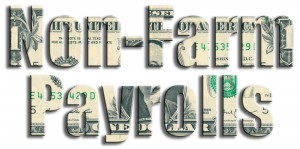Gold traders appear to be bullish for 2017 according to a recent survey, as the dollar comes under pressure. Friday is “NFP day”, let’s be prepared.
In a recently published Bloomberg survey the analysts questioned appeared to indicate confidence for gold to rise during 2017. There were several factors suggested as to why it’s safe haven appeal and desire as a store of value, may return…
The eurozone is viewed as still having crisis issues, namely Italy’s tattered ba nking system and Greece’s ongoing debt issues. Indian and Chinese gold buying will remain strong, due to seasonal holidays and India’s cash confiscation; the Chinese lunar calendar celebration increases demand for gold. Whilst incoming president Trump’s suggested fiscal stimulus policy may also cause rapid inflation.
nking system and Greece’s ongoing debt issues. Indian and Chinese gold buying will remain strong, due to seasonal holidays and India’s cash confiscation; the Chinese lunar calendar celebration increases demand for gold. Whilst incoming president Trump’s suggested fiscal stimulus policy may also cause rapid inflation.
Gold pricing for immediate delivery has risen every day in 2017, and was up 1% at $1,175.38 an ounce at 2pm London time. Gold rose by 8.1% in 2016, the best performance for the precious metal in five years.
In another (less publicised) Bloomberg survey it would appear that USA households were more upbeat last year (on average) than at any time since 2007, according to the Consumer Comfort Index released on Thursday, the “comfort measure” averaged 43.6 in 2016, up from 42.9 a year earlier and the best reading since 44.8 in 2007.
Unemployment claims in the USA declined to the lowest level in eight weeks according to data released by the BLS (Labor Department) on Thursday, dropping by 28,000 to 235,000 in the week ending Dec. 31st. The average expectation of economists polled was 260,000. However, the private jobs firm ADP recorded only 153K jobs created in December, some way off the estimate of 175K and quite a fall from the 215K created in November. Adding some doubts as to the strength of the NFP jobs data to be published on Friday.
European news on Thursday mainly focused on the UK’s service sector data. The UK services Purchasing Managers’ Index (PMI) beat forecasts growing in December at the fastest rate since mid 2015.
Similar to the USA auto sales stats published on Wednesday, the UK’s consumers just can’t get enough of new cars, on finance. A record 2.69 million new cars were sold in Britain in 2016, car industry data showed. These two recent releases indicate that the issues of Brexit are not damaging the UK’s confidence, yet. But as many analysts will keep on reminding their audience; “the UK hasn’t left yet”. Only when the Brexit negotiations begin will sterling and the UK’s economy come under real, sustained, levels of pressure.
Sterling started the day under pressure, but improved after strong data from the UK’s services sector and record car sales helped GDP/USD rise by circa 0.9% to $1.2432, on course for its best day versus USD since early December.
Sterling slid versus the euro, EUR/GBP at 85.27 pence, down 0.3 percent on the day, GBP/JPY was down 0.8% at 143.32, clawing back losses, having earlier crashed through S3 on target for its worst session versus yen in a fortnight.
Sterling slumped by 16% versus the dollar and 14% versus the euro in 2016, the worst annual performance in eight years. The falls mainly coming as a consequence of Britain voting on June 23rd to leave the European Union.
The SPX fell 0.1% to 2,269 in New York, but still closed only 0.1% below the record set on Dec. 13th. The index had slipped by as much as 0.5% earlier in the trading session. The DJIA closed down 0.21%. European equity markets were very subdued; France’s CAC closing the day up 0.03%, Germany’s DAX up 0.01% and the UK’s FTSE 100 closed up 0.08%.
The Dollar Spot Index fell by 1% on Thursday, registering its biggest closing slide since July. EUR/USD gained 1.1% to 1.0605, whilst USD/JPY fell by 1.6 percent to 115.35. Gold rose 1.5% to reach the highest level seen in almost a month at $1,181 an ounce. Silver and platinum also rose in the spot market.
Economic calendar events for Friday January 6th all times quoted are London times
10:00, currency effected EUR. Euro-Zone Retail Sales. Sales are predicted to have fallen, growing only 1.9%, from 2.4% in November.
13:30, currency effected USD. Trade Balance (NOV). The negative USA trade balance is predicted to have grown to -$45.5b from -$42.6b previously.
13:30, currency effected USD. Change in Non-farm Payrolls (DEC). The expectation is that the USA added 175K jobs in December, down marginally from 179K in November. However, the ADP low jobs data number published on Thursday has cast doubt on that anticipated rise.
13:30, currency effected USD. Unemployment Rate (DEC). The headline unemployment rate in the USA is predicted to rise to 4.7%, from 4.6% previously.
15:00, currency effected USD. Factory Orders. Factory orders are predicted to have fallen by -2.3%, from a 2.7% increase in November.
15:00, currency effected USD. Durable Goods Orders (NOV). Durable goods orders are expected to have fallen by -4.60%, a similar reading the the previous data.
18:00, currency effected USD. Baker Hughes U.S. Rig Count (JAN 6). As always, despite being the last high significant data release of the week, the USA oil rig count can dramatically effect the price of oil and as a consequence the dollar’s value.


